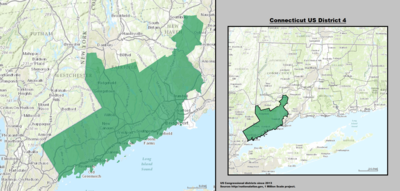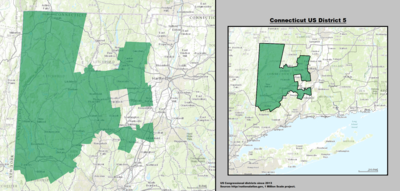User:Porvida/sandbox
Maryland’s colonial economic history is marked by a heavy reliance on the tobacco crop. But though it would remain a slave state until the end of the Civil War, it was not until the 1700s that slave labor began to drive agricultural production in the colony. The colonial era would also see Maryland begin early industrialization and urbanization, experiment with different monetary systems, and begin to diversify its economy.
Early Days of the Colony (1633-1640)[edit]
Landing initially on St. Clement’s Island on March 25, 1634, Maryland’s first settlers would establish their colony around St. Mary’s City. Nearly as soon as they arrived in St. Mary’s, the colonists successfully grew enough food to prevent starvation and to export back to Britain. In these early days, the majority of those who worked the land were indentured servants. Though Lord Baltimore initially hoped to establish a “landholding aristocracy” through the provision of affordable land, the colony’s land system promoted the creation of a large number of small farms. Many were owned by former indentured servants. By the late 1600s, more than two-thirds of farmers in the colony held estates worth less than £100. They practiced a form of agriculture, known as Chesapeake husbandry, with 20 year crop rotations that limited economies of scale.
Depression and the Commonwealth (1640s to 1660)[edit]
In the second and third decades of the colony, Maryland increased its reliance on the tobacco crop, suffered through economic depression, and instituted a series of regulatory reforms to try to curb the impact of fluctuations in tobacco prices on the colony’s economy.
When Maryland farmers first began growing tobacco in the 1630s, production totaled 700 pounds per farmer. In the 1650s, each farmer averaged 1,300 pounds of tobacco. As production grew, the total value of tobacco exported from the colony reached between £800 and £1200, while the average tobacco planter earned £5 to £10 per year.
In the middle of the 17th Century, Maryland suffered a series of depressions, as a result of the drop in tobacco prices. And though farmer profits fell during this period, the costs of imports remained stable. In response to the economic instability, the colonial assembly attempted a number of strategies to diversify the economy and limit market fluctuations. Corn regulations mandated that farmers grow two acres of corn, outlawed “the export of grain in times of scarcity,” and prohibited hoarding of corn. To limit further decline in prices, the colonial assembly ordered the destruction of low-quality tobacco in 1640. In hopes of moving the economy away from tobacco, the colonial assembly subsidized the production of hemp and flax. The assembly also sought unsuccessfully to develop port towns to serve as centers of trade.
Amidst the economic difficulties, a few women entered the colonial workforce as professionals. Katherine Hebden was one of Maryland’s three doctors in the 1640s and 50s.
Emergence of a Slave economy (1670s to 1730s)[edit]
In the period following Oliver Cromwell’s fall in England, the colony grew and transitioned to a slave economy. It saw the beginnings of industry and urbanization.
At the turn of the eighteenth century, the King William’s War (1689-1697) and Queen Anne’s War (1702-1714) brought Maryland into depression again as European demand for tobacco decreased sharply. As a result, many poorer farmers began to diversify their efforts, adding cattle and grain to their fields and adopting crafts. And despite the economic uncertainty, indentured servants arrived in large numbers until the end of the seventeenth century. With the dawn of the 1700s, however, farmers shifted to slave labor for their fields. Between 1704 and 1720, the slave population shot from 4,475 to 25,000. During this period, the slave population was increasingly concentrated in estates with more than ten slaves. Some historians consider this transition to a slave economy to be the start of greater social stratification in the colony, as wealthier Marylanders were then able to increase their farms’ productivity through the increasing returns to scale that slave labor enabled. According to historian Trevor Burnard, the wealthiest farmers in the colony held 36 percent of the wealth prior to 1708. By 1742, they held 58 percent.
Other changes were afoot, too. In the 1730s, farmers began to smelt iron near Annapolis. In Annapolis itself, then the largest city in the colony, the urban population doubled between 1715 and 1740. In this era of transition, the colony again fell into economic depression in the 1730s.
Towards the Revolution (1740s to 1770s)[edit]
In the final decades of the colonial period, the Maryland economy increasingly diversified from its tobacco colony roots. Monetary policy evolved, as well.
Following the French and Indian War, grain exports reached one-third of the level of tobacco production. Still, the Maryland wheat trade suffered in the 1760s due to crown restrictions on shipping to Britain. Maryland wheat was shipped instead to continental Europe, where it competed against local producers. To supplement their income, large planters increasingly turned to money lending and renting land to tenant farmers. All the while, tobacco production continued to increase. In 1740s, the colony averaged around 20 million pounds per year. By the 1760s, Maryland produced 25 million pounds per year.
English law initially forbade either the export of British currency or the establishment of colonial mints. As a result, currency shortages were frequent in Maryland and merchants often paid British firms with bills of exchange. In fact, until legislative action in 1747, tobacco was a frequently-used internal currency. Thereafter, paper money increasingly replaced the barter system. Unlike most colonial currencies, which were backed by future tax receipts or mortgages on land or metals, Maryland’s paper money was backed by a sinking fund in the Bank of England that would periodically convert a portion of its holdings to sterling.
Current Representatives[edit]
List of current members of the Montgomery County Council, their terms in office, and district boundaries. The delegation has a total of 9 members, five in districts, four at-large, and all of whom are members of the Democratic party.
| District | Representative | Party | Incumbency | District map | ||||||||||||||||||
|---|---|---|---|---|---|---|---|---|---|---|---|---|---|---|---|---|---|---|---|---|---|---|
| 1st District | Roger Berliner | Democratic | December 2006 – present | 
| ||||||||||||||||||
| 2nd District | Craig Rice | Democratic | December 2010 - present | 
| ||||||||||||||||||
| 3rd District | Sidney Katz | Democratic | December 2014 - present | 
| ||||||||||||||||||
| 4th District | Nancy Navarro | Democratic | 2009 - present | 
| ||||||||||||||||||
| 5th District | Tom Hucker | Democratic | December 2014 - present | 
| ||||||||||||||||||
| At-Large | Marc Elrich | Democratic | December 2006 - present | 
|
- | At-Large | Nancy Floreen | Democratic | December 2002 - present | 
|
- | At-Large | George Leventhal | Democratic | December 2002 - present | 
|
- | At-Large | Hans Riemer | Democratic | December 2010 - present | 
|
Delegation timeline (1789 – Present)[edit]
| Party | Candidate | Votes | % | |
|---|---|---|---|---|
| Democratic | Toni Harp | 42,045 | 43.38 | |
| Democratic | Justin Elicker | 31,613 | 32.62 | |
| Democratic | Henry Fernandez | 31,613 | 32.62 | |
| Democratic | Kermit Carolina | 31,613 | 32.62 | |
| Total votes | 96,915 | 100 | ||
Tables showing membership in the Connecticut federal House delegation throughout history of statehood in the United States.
| Council | Elected by district or countywide | |||||||||
|---|---|---|---|---|---|---|---|---|---|---|
| 1st District | 2nd District | 3rd District | 4th District | 5th District | At-Large | At-Large | At-Large | At-Large | ||
| Twelfth Council (1990-1994) |
Betty Ann Krahnke (R) | Nancy Dacek (R) | Bill Hanna (D) | Marilyn J. Praisner (D) | Derick Berlage (D) | Michael Subin (D) | Isiah "Ike" Leggett (D) | Bruce Adams (D) | Gail Ewing (D) | |
| Thirteenth Council (1994-1998) |
Neal Potter (D) | |||||||||
| Fourteenth Council (1998-2002) |
Phil Andrews (D) | Blair Ewing (D) | Steve Silverman (D) | |||||||
| Fifteenth Council (2002-2006) |
Howard Denis (R) | Michael Knapp (D) | Thomas Perez (D) | Nancy Floreen (D) | George Leventhal (D) | |||||
| Sixteenth Council (2006-2010) |
Roger Berliner (D) | Valerie Ervin (D) | Marc Elrich (D) | Duchy Trachtenberg (D) | ||||||
| Seventeenth Council (2010-2014) |
Craig Rice (D) | Nancy Navarro (D) | Hans Riemer (D) | |||||||
| Eighteenth Council (2014-2018) |
Sidney Katz (D) | Tom Hucker (D) | ||||||||
| Nineteenth Council (2018-2022) |
Andrew Friedson (D) | Gabe Albornoz (D) | Evan Glass (D) | Will Jawando (D) | ||||||
- ^ "Primary Election". District of Columbia Board of Elections. September X, 2013.
{{cite news}}: Check date values in:|date=(help)
